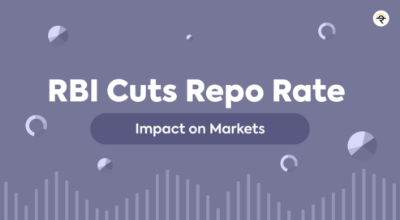News Breakdown: Trump's Push for Reciprocal Tariffs
In a significant policy shift, former U.S. President Donald Trump has announced plans to implement reciprocal tariffs on imports. This means that the U.S. will impose the same tariff rate on imported goods as other countries impose on American products. While this policy sounds straightforward, it is an intricate process that requires reviewing thousands of tariff codes across multiple trade agreements.
Trump's directive tasks U.S. trade officials with analyzing global tariff structures and proposing tariff hikes accordingly. While the tariffs will not be applied immediately, the process is expected to move quickly, with potential new trade barriers emerging in the coming months. This move is seen as an aggressive stance to rebalance trade deficits and counter perceived unfair trade practices by countries like China, India, and the European Union.
Impact on the Indian Stock Market
India, being one of the key trading partners of the U.S., could face ripple effects from this policy. Here’s how different sectors and investor sentiment might react:
1. Export-Oriented Sectors: A Tough Road Ahead
● IT & Software Services: The Indian IT sector, which heavily relies on U.S. clients, could see increased scrutiny or restrictions if Trump targets service-based trade imbalances. This might lead to short-term volatility in IT stocks.
● Pharmaceuticals: The U.S. is a major market for Indian drug manufacturers. If reciprocal tariffs extend beyond goods to non-tariff barriers like stricter FDA regulations, pharma exports may take a hit.
● Textiles & Apparel: With India’s textile exports facing competition from other low-cost nations, any additional U.S. duties could hurt industry margins.
2. Domestic Manufacturing and Import-Substituting Industries: A Potential Boost
● If the U.S. imposes tariffs on Indian exports, domestic demand for these goods might increase, benefiting local manufacturers.
● Make in India initiatives could gain traction, encouraging companies to focus on self-reliance in sectors like electronics, auto components, and heavy machinery.
3. Rupee Volatility and Inflationary Pressure
● Trade tensions often lead to currency fluctuations. If the rupee weakens due to trade uncertainty, it could increase the cost of imports, putting inflationary pressure on the economy.
● Higher import costs could push sectors like automobiles, consumer electronics, and oil & gas to pass on price hikes to consumers, impacting spending behavior.
Investor Sentiment & Caution: Navigating Market Volatility
● Short-Term Volatility Expected: Global markets, including India’s, often react negatively to trade-related uncertainties. Sectors reliant on U.S. trade may see knee-jerk reactions.
● Long-Term Play for Investors: While certain industries might struggle, others (such as domestic manufacturing and infrastructure) could benefit. Investors should focus on fundamentally strong businesses rather than short-term fluctuations.
● Diversification is Key: As geopolitical risks increase, maintaining a well-balanced portfolio across different asset classes may help manage risk.
Disclaimer: No Buy/Sell Recommendation
This blog is for educational purposes only and should not be considered investment advice. Investors are encouraged to conduct their own research or consult financial professionals before making investment decisions.
_400.jpeg)


_400.png)

































